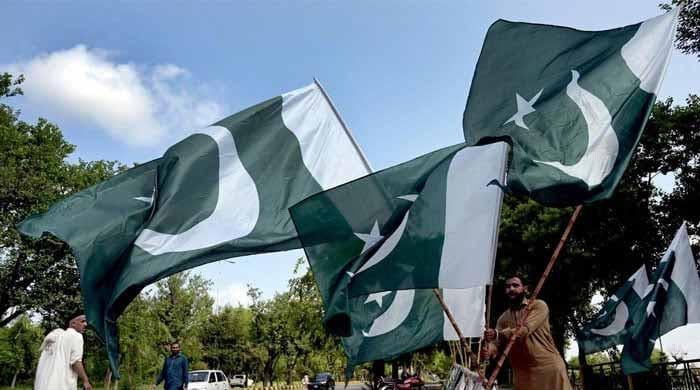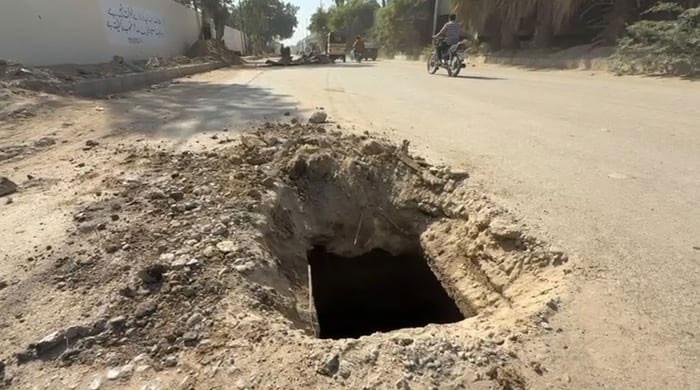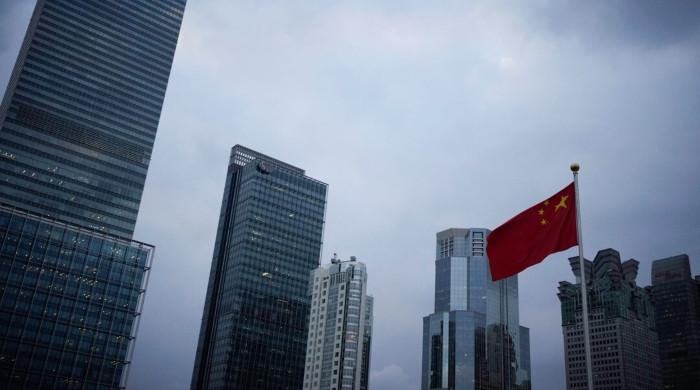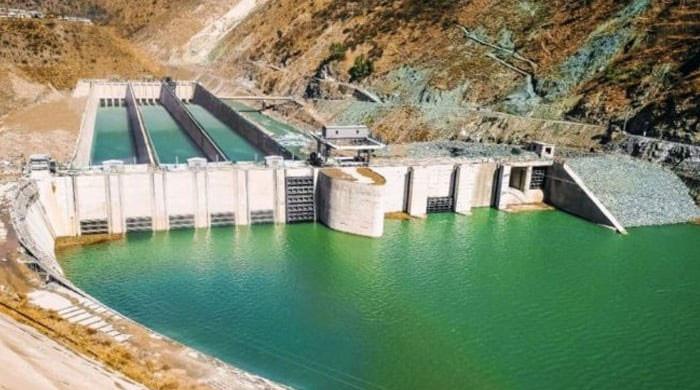2022: What will be PM Imran Khan's biggest challenges
The real story on the risk to the government from the opposition has not been the PML-N or the PPP, but its own incessant ability to generate crisis after crisis for itself
December 31, 2021
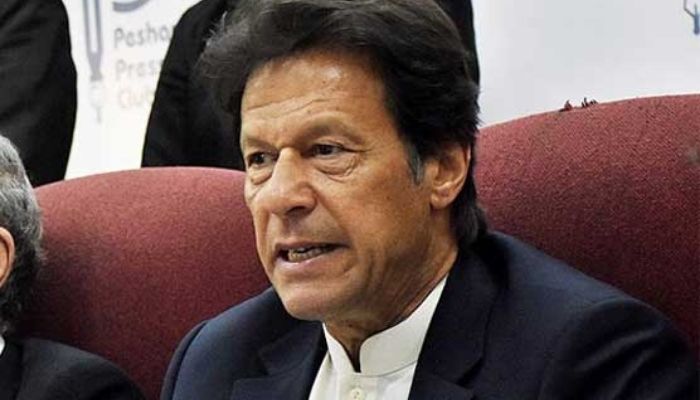
Exactly one year ago, I had identified five risks that Prime Minister Imran Khan faced in 2021.
Risk 1: A weak and imbalanced economic recovery. Risk 2: System-wide division and disruption. Risk 3: Escalation of violence in Afghanistan. Risk 4: Further alienation and disengagement of the ‘periphery’. Risk 5: Mainstream citizen distrust and disengagement.
Today, as I try to close out the year on a note of optimism, let me first offer my assessment of how well PM Khan has managed these five risks.
On the first risk, I think PM Khan has performed better than he or his clown car of comms advisers would allow us to believe. Inflation has severely diminished the value of the GDP growth in the economy in 2021, but the post-pandemic recovery in Pakistan went better than any serious observers expected it to. The worst aspect of PM Khan’s economic management in 2021 was not the economic performance of the country per se, but the manner in which economic issues were escalated into existential tropes. The finance ministry became a merry go round, with Abdul Hafeez Shaikh being left in the lurch first, and Shaukat Tarin left to fend for himself.
The absence of a coherent and mature economic narrative from Islamabad almost forced State Bank Governor Raza Baqir to jump into the fray. Many of the solid long-term measures to digitise the economy, and to force banks to engage more seriously with consumers instead of being T-bill printing presses have been diminished in the public eye because the State Bank is left to run communications ops for a government that has an unreal appetite for circus acts as its spokespersons.
On the second risk, even after Notification Gate, PM Khan has managed to keep his head above water. The real story on the risk to the government from the opposition has not been the PML-N or the PPP, but rather the government’s own incessant ability to generate crisis after crisis for itself. More worrying than all of this is the emergence of the TLP as a viable and long-term threat to traditional political machinations. Will the fallout of Notification Gate also mean a subdued TLP in the months to come? This is the hope on which most traditional politicians and Pakistani elites are banking on. Though there can be little doubt that the genesis of the TLP is as inorganic as any other long-term afflictions Pakistan deals with, there is also little doubt that the group’s appeal is now as organic as the sinners and saints that make up our political tapestry. More on the TLP below.
The third risk did not materialise to the extent that it could have. This was in part due to the manner of Ashraf Ghani’s exit from Afghanistan, and in part to the robustness of the Doha process (for which Zalmay Khalilzad will never quite get the credit he deserves). But the untold story of the relative calm in Afghanistan from August 15 onward, is also that of the deft and tireless diplomacy of Special Envoy Mohammad Sadiq, Ambassador Mansoor Ahmad Khan, the behind-the-scenes work of former DG ISI and now Corps Commander Peshawar Lt Gen Faiz Hameed, and the steady influence of National Security Advisor Dr Moeed Yusuf. Critics of PM Khan cannot have our cake and eat it too. If he is responsible for the plethora of missteps and mistakes his regime has made, then he also gets the credit for appointing Sadiq and Yusuf, and letting them do their jobs.
The fourth risk has been PM Khan’s weakest and most disappointing failure. He should have been the PM that was at the forefront of every tragedy, comforting the mothers of missing persons, the children of martyred soldiers, the victims of systemic and targeted attacks, and the protesters that raise their voices against injustice. Instead, he has been holed up in Islamabad, constantly lied to and misguided by people who have cultivated his vulnerability to breathless and ceaseless praise.
He began the year by telling protesting Hazaras in Quetta that they could not blackmail him into expressing solidarity with them, continued his now more than three year record of outsourcing the management of political challenges, like the Pashtun Tahaffuz Movement (PTM), to non-civilian hands, and continued to refuse to engage with the legitimate and elected opposition by branding all of them as thieves undeserving of the stature of political equals.
Women at large, Baloch students, residents of the newly merged districts, Sindhis on the periphery of the wealth and pomp enjoyed by the PPP mainstream, Aurat March organisers, labour unionists, sanitary workers and a slew of non elites for whom access to Zaman Park rolodexes is impossible were pushed further to the periphery in 2021. What is behind the calculus for why he has been so inaccessible to causes, like missing persons, that he used to be so vocal and strident about?
That may be explained by the fifth risk: citizen distrust and disengagement. One year ago, I had warned of the metastasizing nature of the appeal of narratives like the one espoused by the TLP. The formula is not hard to understand. At less than 23 years, Pakistan’s median age is both its golden goose, and its barbed wire noose. More than 110 million Pakistanis are below the age of 23. The vast majority of them are not part of any of the things that excite elite Pakistan. There are no start-ups, nor incubators, nor VCs that will rescue them. There are no seats at LUMS or NUST or QAU for them. Coffee or dinner dates or pre-rishta orientations are a distant dream.
Elite Pakistan – the one that runs parliament, the army, the TV channels and newspapers, and even the best TikTok channels – is itself lacking in the one thing that, even more than jobs and interest free loans, can help Pakistani youth. And that is a sense of community. Pakistan’s stock of social capital is already in very short supply. How can these depleted reserves be renewed and refreshed, especially in Pakistan’s cities? This is the generational challenge that Pakistani leaders face. So far, their answers do not inspire confidence.
It is hard to shake off the stench of the Sialkot lynching. Like so many others, I have been consumed by a sense of sorrow and shame at the state of a public discourse in which such a horrific crime was committed, en masse, with almost no substantial impact on the inner core of how Pakistanis communicate with each other about their country and its future. But the bestial violence in Sialkot offers yet another entry point for engagement with this fifth risk in the Pakistani discourse.
Why has PM Khan’s impressive handling of the Covid-19 pandemic, or his expansion of the BISP social protection mechanism through the expansive Ehsaas programme, or even his government’s solid handling of the Afghanistan crisis, not garnered wider traction?
One argument may be that a leader too scared, too witless or too ensconced in his or her bubble cannot possibly excite and engage young Pakistan the way that so many radicals and extremists regularly do. The solution is not to shy away in the face of the challenge of extremists, but to offer a more vivid and exciting version of Pakistan’s future to them.
The problem is that PM Khan has spent the first three plus years of his time as prime minister sitting on the same container that he merrily rode into Islamabad on. Now that the tractor trolley that has been pulling him along seems out of gas, PM Khan seems deflated and out of ideas. In 2022, it will not be repairing the damaged relations between him and the selectors that will sustain him and the PTI in power. It will be how successfully he short circuits the equation and engages directly with the electors. Is the leader of the so-called youth too old and grey to understand the situation and adapt to it? The answer to this question will shape Imran Khan’s 2022.
Happy new year to all Pakistanis, and especially my readers. May Allah forgive our sins, and bless us with our best year yet.
The writer is an analyst and commentator.




